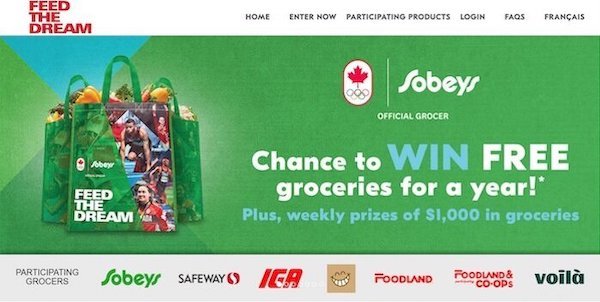Konkursy i promocje
Contests and promotions have become an integral part of marketing strategies across various industries. They not only attract customers but also enhance engagement and brand loyalty. In this article, we’ll dive deep into the world of contests and promotions, their benefits, and how to effectively implement them in your marketing efforts.
Did you know that 70% of millennials actively participate in contests and promotions? This statistic showcases the importance of these marketing tools in reaching a younger audience. In the following sections, we’ll explore the different types of contests and promotions, best practices for running them, and what to consider for maximizing their effectiveness.
Understanding Contest and Promotion Types
1. Social Media Contests
Social media contests have gained significant popularity due to the widespread use of platforms like Facebook, Instagram, and Twitter. They encourage user-generated content and foster community engagement.
- Photo Contests: Participants submit photos related to a theme, and the best ones are chosen based on votes or a jury’s decision.
- Caption Contests: Users are asked to create witty captions for images, with the funniest or most relevant caption winning.
- Like and Share Contests: To enter, users must like and share a post, increasing brand visibility and engaging a larger audience.
Benefits of Social Media Contests
- Increased engagement and reach
- Cost-effective marketing strategy
- Valuable user-generated content
2. Email Promotions
Email promotions involve sending special offers or contest entries via email to existing customers or subscribers. This method allows businesses to target their audience directly.
- Exclusive Offers: Providing discounts or exclusive access to contests for email subscribers can enhance customer loyalty.
- Survey Contests: Encourage users to complete a survey to enter a contest, gathering valuable feedback while promoting engagement.
Benefits of Email Promotions
- Direct communication with audience
- Higher conversion rates compared to social media
- Ability to track engagement metrics
3. In-Store Promotions
In-store promotions entice customers to visit the physical location. Examples include product sampling, exclusive in-store contests, and giveaways.
- Drawings: Customers who make a purchase enter a drawing for a chance to win a larger prize.
- Buy One, Get One Promotions: Encouraging purchases while providing a value incentive.
Benefits of In-Store Promotions
- Boosts foot traffic and increases sales
- Creates an engaging shopping experience
- Allows for direct customer interactions
Best Practices for Running Contests and Promotions
1. Set Clear Objectives
Before launching a contest or promotion, it’s crucial to define your goals. Are you looking to increase brand awareness, boost engagement, or drive sales? Having clear objectives will help you design an effective campaign.
2. Know Your Audience
Understanding your target audience can guide the type of contests and promotions you run. Different demographics may respond better to specific types of incentives.
3. Create Engaging Content
High-quality and engaging content is essential for attracting participants. Use eye-catching visuals and clear messaging to communicate the contest details effectively.
4. Promote Your Contest
Once your contest is live, ensure it receives adequate promotion. Utilize all available channels, including social media, email, and your website, to spread the word.
5. Monitor and Analyze Performance
Post-contest analysis is vital for understanding what worked and what didn’t. Utilize analytics tools to measure participation rates, engagement levels, and overall effectiveness.
Legal Considerations
When conducting contests and promotions, it’s essential to comply with legal regulations. Ensure you have clear and concise rules, eligibility requirements, and methods of selecting winners.
Common Legal Requirements:
- Clearly defined contest rules
- Eligibility criteria outlined
- Disclosure of any partnerships or sponsorships
How to Mitigate Legal Risks
Consulting with a legal team can help navigate the complexities of contest laws and regulations, ensuring that your promotions comply with local laws.
Examples of Successful Promotions
Many businesses have leveraged contests and promotions to their advantage, yielding impressive results. Let’s explore a couple of standout examples:
1. The Sobeys Feed The Dream Contest

Sobeys, a leading Canadian grocery retailer, launched the “Feed The Dream Contest” to encourage customers to share their meal ideas. By participating, individuals could win a dream kitchen makeover, which not only incentivized engagement but also promoted their food products.
2. Starbucks Rewards Program
Starbucks runs a unique rewards program that integrates contests and promotions, providing customers with points for every purchase. These points can be redeemed for free drinks and exclusive offers, encouraging repeat business and brand loyalty.
Integrating Contests into Your Marketing Strategy
Incorporating contests and promotions into your overall marketing strategy requires careful planning and execution. The key is to align them with your brand values and customer interests.
1. Collaborate with Influencers
Partnering with social media influencers can enhance the reach of your contests. Influencers can introduce your contest to their followers, increasing participation rates.
2. Utilize User-Generated Content
Encouraging participants to create content related to your contest can provide valuable marketing material. User-generated content can enhance authenticity and foster community engagement.
3. Follow Up with Participants
Post-contest communication with participants can nurture relationships, keeping them engaged with your brand long after the contest ends. Consider offering special discounts or sneak peeks at upcoming products.
Conclusion
Contests and promotions are powerful tools that can enhance brand visibility, engage customers, and ultimately drive sales. By understanding the different types, implementing best practices, and learning from successful examples, businesses can create compelling competitions that resonate with their target audience.
As you plan your next marketing campaign, consider integrating contests and promotions to elevate your strategy. With careful planning and execution, these initiatives can truly set your brand apart in a competitive landscape.
For more insights on how to effectively use contests in your marketing strategy, check out these articles: Contests and Promotions: How to Get Started and Maximizing Engagement with Online Contests.
